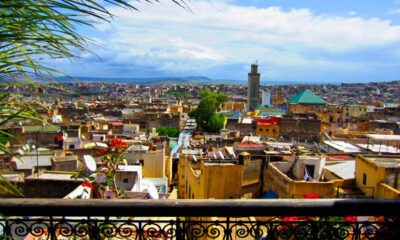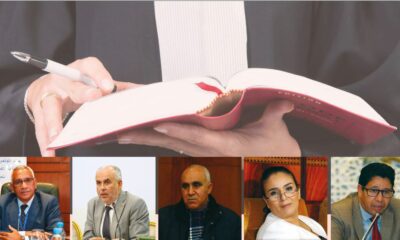Kingdom
Partnerships to Transform the “Energy Test”
For more than 15 years, Morocco has charted a clear energy course, establishing a significant comparative advantage. However, increased efforts are needed to expand strategic partnerships with global players and private operators. Insight.

With an immense natural resource potential, bolstered by an average of 3,000 hours of sunlight per year and high wind speeds with a capacity factor exceeding 65% in the south, Morocco is well-positioned to play a leading role in global clean energy production in the coming years.
The key challenge for Morocco, which aims to increase the share of renewable energy in its energy mix to 52% by 2030, is finding the right mechanisms to transform its energy ambitions into reality. This shift would reduce the country’s heavy energy dependence (currently at 90%), diversify its economy, and contribute to global energy security through exports—a vital source of foreign currency and a boon for the balance of payments.
At the recent 4th International Energy Forum in Casablanca, strategic partnerships were highlighted as a powerful lever for swiftly harnessing the country’s vast renewable energy potential. Morocco’s untapped wind energy capacity alone is estimated at over 190 GW (190,000 MW).
Given the billions of dollars required to exploit this vast potential, alongside solar energy, greater involvement from investors and private operators—providers of technology and innovation—is essential.
Boosting PPPs and Engaging the Private Sector
Currently, Morocco’s total installed renewable energy capacity does not exceed 5,500 MW, highlighting the need to accelerate the pace of clean energy project implementation.
Experience shows that Morocco’s largest renewable energy projects have involved significant participation from the private sector and international operators. For example, Africa’s largest wind farm, located in Morocco, is operated by the private company Nareva.
This underscores the crucial role of the private sector in renewable energy production. According to Reda Hamedoun, Executive Director of Nareva, private sector involvement has declined in recent years compared to the 2010s. “The annual increase in clean energy integration into Morocco’s grid was about 300 MW, which is less today,” he notes. Similarly, Anas El Bouyousfi, CEO of Suncorp, highlights that the demand for photovoltaic energy from industries is so high that the current number of companies in Morocco cannot meet it.
Building an ecosystem to encourage new national and international players is therefore essential. As Hicham Bouzekri, former Masen executive and founder of African Technical Advisors, points out, beyond Morocco’s potential, the challenge is to transform energy ambitions by addressing issues like job creation and establishing the country as a net energy exporter.
According to industry leaders, Morocco’s green hydrogen offer could enable a significant portion of the 190 GW wind potential to be harnessed, not only for export but also to meet job creation and new industry needs, such as developing a cleaner electrochemical sector.
Green hydrogen could also be used in Morocco to decarbonize transport, aluminum, steel, and ammonia industries. Achieving this requires close collaboration between the state and private operators, which is crucial given that renewable energy exploitation generates fewer jobs compared to heavy industries. Hence, the importance of extending industrial efforts nationally.
Green Hydrogen: A Holistic and Promising Vision
The price of green hydrogen, ranging from $2 to $2.30 per kilo in some regions of Morocco, offers a significant competitive advantage for its industrial use.
According to Nawfal El Fadil, Executive Director of Masen, before the large-scale production of green hydrogen, it is crucial to ensure that Morocco can produce the most competitive green hydrogen molecule. This assurance will come from the efforts and experience of private operators in various sectors like automotive and aerospace.
The former CEO of EDF Morocco notes that the implementation of Morocco’s Green Hydrogen Offer has provided clarity for private operators and investors regarding their commitments to the state, incentives, available land, and industrial integration.
The state has chosen to give investors flexibility in proposing the types of industries to develop. In contrast, some countries, like Saudi Arabia, require private investors in green hydrogen to develop specific industries in designated regions.
“The circular is advantageously holistic. Masen and the authorities have received around forty project proposals under the Morocco Green Hydrogen Offer,” El Fadil announced recently in Casablanca.
In Morocco, the drive for green molecule production is led by the Chbika project in the Guelmim-Oued-Noun region, spearheaded by TotalEnergies and its international partners. It aims to build 1 GW (1,000 MW) of onshore solar and wind capacity to power green hydrogen production through desalinated seawater electrolysis, converting it into 200,000 tons of green ammonia annually for the European market.
Strategic Alliance with Acwa Power
Omar Alaoui Mhamdi, Director of Acwa Power Morocco, emphasizes that to produce the most competitive kilowatt-hour in renewable energy now and in the future, Morocco must partner with global players whose innovative solutions ensure competitiveness.
Acwa Power, active in 13 countries, is a key player in Morocco, having developed the Noor solar park with Masen, featuring two innovative technologies (CSP and PV).
Acwa Power also leads in wind energy in northern Morocco with a 120 MW park and pioneers photovoltaic projects in southern Morocco, particularly in Boujdour and Laâyoune.













